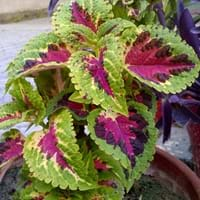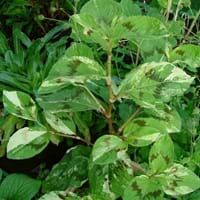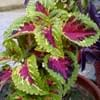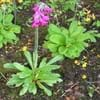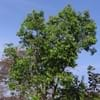Life Span
Perennial
Perennial
Type
Shrub
Herbaceous Perennial
Origin
Eastern Asia, Malaysia
North America, United States, Northeastern United States, Mid-Atlantic United States, Southeastern United States, Central United States, South-Central United States, Canada, Eastern Asia, India, Nepal, China, Japan, Korea
Types
Not Available
Not Available
Habitat
gardens, Subtropical climates, tropical environments
Cliffs, Moist woods, Riverbanks
USDA Hardiness Zone
11-12
5-9
AHS Heat Zone
Not Available
9-5
Sunset Zone
Not Available
2a, 2b, 3a, 3b, 4, 5, 6, 7, 8, 9, 14, 15, 16, 17
Habit
Bushy, Evergreen
Upright/Erect
Flower Color
Not Available
Light Green
Flower Color Modifier
Not Available
Bicolor
Fruit Color
Non Fruiting Plant
Dark Red, Copper
Leaf Color in Spring
Green, Red, Green, Purple
Green, Dark Green
Leaf Color in Summer
Green, Red, Green, Purple
Green, Dark Green
Leaf Color in Fall
Red, Green, Purple
Dark Green, Dark Red
Leaf Color in Winter
Red, Green, Purple
Not Available
Leaf Shape
Ovate
Elliptic
Plant Season
Summer
Summer, Fall
Sunlight
Full Sun, Partial shade
Full Sun, Partial Sun
Type of Soil
Damp
Clay, Loam, Sand
The pH of Soil
Neutral, Slightly Acidic
Acidic, Neutral
Soil Drainage
Well drained
Average
Bloom Time
Early Summer
Late Summer, Early Fall
Tolerances
Wet Site
Drought
Where to Plant?
Container, Ground, Pot
Ground
How to Plant?
Cuttings, Seedlings
From Rhizomes, Seedlings
Plant Maintenance
Medium
Medium
Watering Requirements
Requires a lot of watering
Keep ground moist
In Summer
Lots of watering
Lots of watering
In Spring
Moderate
Moderate
In Winter
Ample Water
Average Water
Soil pH
Neutral, Slightly Acidic
Acidic, Neutral
Soil Type
Damp
Clay, Loam, Sand
Soil Drainage Capacity
Well drained
Average
Sun Exposure
Full Sun, Partial shade
Full Sun, Partial Sun
Pruning
cut main flower spike, Cut or pinch the stems
In late autumn, Remove damaged leaves, Remove dead leaves
Fertilizers
Full-strength liquid fertilizer
All-Purpose Liquid Fertilizer
Pests and Diseases
Downy mildew, Red blotch, Stem rot
Red blotch
Plant Tolerance
Wet Site
Drought
Flower Petal Number
Not Available
Not Available
Foliage Texture
Fine
Medium
Foliage Sheen
Matte
Not Available
Attracts
Not Available
Not Available
Allergy
Not Available
Not Available
Aesthetic Uses
Cottage Garden, Showy Purposes, Used for making hedges
Not Used For Aesthetic Purpose
Beauty Benefits
Weightloss
Not Available
Edible Uses
Yes
Not Available
Environmental Uses
Air purification, Provides ground cover, Soil protection, soil stabilisation
Air purification
Medicinal Uses
Asthma, Glaucoma, High blood pressure, Liver Protection, Weight loss
Not Available
Part of Plant Used
Leaves
Not Available
Other Uses
Used as Ornamental plant, Used for its medicinal properties, useful as a ground cover
Decorative veneers, flooring, paneling, Showy Purposes
Used As Indoor Plant
Yes
No
Used As Outdoor Plant
Yes
Yes
Garden Design
Container, Groundcover, Houseplant, Mixed Border, Tropical
Wildflower
Botanical Name
Plectranthus scutellarioides
PERSICARIA virginiana
Common Name
Coleus, Painted nettle
Jumpseed
In German
Buntnessel
jumpseed
In French
Vieux garçon
jumpseed
In Spanish
coleo
jumpseed
In Portuguese
cóleus
jumpseed
In Polish
Coleus
jumpseed
In Latin
Coleus
Salire celeritate
Phylum
Magnoliophyta
Tracheophyta
Class
Magnoliopsida
Magnoliopsida
Order
Lamiales
Caryophyllales
Family
Lamiaceae
Polygonaceae
Clade
Angiosperms, Asterids, Eudicots
Angiosperms, Core eudicots, Eudicots
Tribe
Not Available
Not Available
Subfamily
Not Available
Not Available
Number of Species
Not Available
Not Available
Difference Between Coleus and Jumpseed
If you are confused whether Coleus or Jumpseed are same, here are some features about those plants to help you choose better. Many people think that these two plants have the same characteristics, but one can see Coleus and Jumpseed Information and learn more about it. Fertilizers required for proper growth of Coleus are Full-strength liquid fertilizer, whereas for Jumpseed fertilizers required are All-Purpose Liquid Fertilizer. Hence, one should know the basic difference between Coleus and Jumpseed if you are planning to have them in your garden to enhance its beauty.
<
Flowering PlantsImportance of Coleus and Jumpseed
Want to have the most appropriate plant for your garden? You might want to know the importance of Coleus and Jumpseed. Basically, these two plants vary in many aspects. Compare Coleus and Jumpseed as they differ in many characteristics such as their life, care, benefits, facts, etc. Every gardener must at least have the slightest clue about the plants he wants to plant in his garden. Compare their benefits, which differ in many ways like facts and uses. The medicinal use of Coleus is Asthma, Glaucoma, High blood pressure, Liver Protection and Weight loss whereas of Jumpseed is Not Available. Coleus has beauty benefits as follows: Weightloss while Jumpseed has beauty benefits as follows: Weightloss.
Compare Facts of Coleus vs Jumpseed
How to choose the best garden plant for your garden depending upon its facts? Here garden plant comparison will help you to solve this query. Compare the facts of Coleus vs Jumpseed and know which one to choose. As garden plants have benefits and other uses, allergy is also a major drawback of plants for some people. Allergic reactions of Coleus are Not Available whereas of Jumpseed have Not Available respectively. Having a fruit bearing plant in your garden can be a plus point of your garden. Coleus has no showy fruits and Jumpseed has no showy fruits. Also Coleus is not flowering and Jumpseed is not flowering . You can compare Coleus and Jumpseed facts and facts of other plants too.
